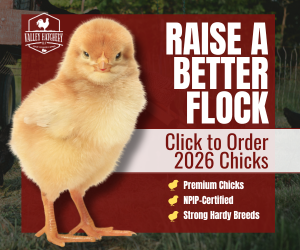Finally back

O.K., diet: No change, all sibs same-same.
Condition of feet: swelling appears similar bilaterally. excision reveals no true plugs or pus; only `dead' material I've ever seen - in humans - that did not have foul odor would be from a sterile abscess.
You mentioned her feet `randomly' swelling? Swellling was apparent before administering antibiotic (could it exacerbate the already existing problem? Don't know enough about the mechanism of action to comment).
I found the link below when hunting down info on tumors. It's from a presentation at the Walter Reed Army Institute of Research (handy ref.)
http://netvet.wustl.edu/species/birds/aviandis.txt
what is has on gout:
GOUT
OCCURRENCE
Gout has been observed in turkeys and chickens of all ages.
ETIOLOGY
The hyperuricemia that must precede deposition of urates in tissues
may be the result of increased rate of synthesis of purine
precursors of uric acid, decreased elimination of uric acid by
kidneys, or a combined effect. Excess dietary protein would lead to
an excess of purine precursors; certain chemicals, toxins, feed
ingredients, infectious agents, and vitamin A deficiency may damage
kidneys or cause kidney dysfunction. Genetics may play a role in
susceptibility to gout.
LESIONS
The condition is characterized by deposition of chalklike uric acid
crystals on the visceral surfaces, in tendon sheaths, and on
articular cartilages.
TREATMENT
The sick bird should be kept at a fairly constant temperature and
drafts must be avoided. The perches must be smooth, flat, broad,
and of soft wood, and be placed at a low level because of the
difficulty the bird has in climbing. The food and water containers
should also be placed within easy reach. The protein content of the
food is to be lowered as much as possible. Concentrates, esp. of
animal origin, are taboo. Low-protein seed mixtures should be
provided, along with a rich supply of vegetables and fruit,
supplemented by vit. A.
For general treatment, give sodium bicarbonate (0.5 to 2%) or
lithium carbonate (1%). Atophan (2-phenylquinoline-4-carboxylic
acid) or cinchophen is recommended for budgerigars, 120 mg SID, and
for fowl, 250 mg BID. In birds suffering from articular gout
presumably no more than arrest of the development can be expected
at best. Aspirin is given solely for analgesic effect, since it has
no curative properties. Dosage is 0.3g (5 gr) dissolved in 240 ml
of water, given as drinking water or by dropper. Allopurinol
("Zyloprim") at 20 mg/p.o./SID will cause regression of tophi but
recurrence occurs when medication is stopped.
(sure hope our roo lives as long as Mr. Mom)

O.K., diet: No change, all sibs same-same.
Condition of feet: swelling appears similar bilaterally. excision reveals no true plugs or pus; only `dead' material I've ever seen - in humans - that did not have foul odor would be from a sterile abscess.
You mentioned her feet `randomly' swelling? Swellling was apparent before administering antibiotic (could it exacerbate the already existing problem? Don't know enough about the mechanism of action to comment).
I found the link below when hunting down info on tumors. It's from a presentation at the Walter Reed Army Institute of Research (handy ref.)
http://netvet.wustl.edu/species/birds/aviandis.txt
what is has on gout:
GOUT
OCCURRENCE
Gout has been observed in turkeys and chickens of all ages.
ETIOLOGY
The hyperuricemia that must precede deposition of urates in tissues
may be the result of increased rate of synthesis of purine
precursors of uric acid, decreased elimination of uric acid by
kidneys, or a combined effect. Excess dietary protein would lead to
an excess of purine precursors; certain chemicals, toxins, feed
ingredients, infectious agents, and vitamin A deficiency may damage
kidneys or cause kidney dysfunction. Genetics may play a role in
susceptibility to gout.
LESIONS
The condition is characterized by deposition of chalklike uric acid
crystals on the visceral surfaces, in tendon sheaths, and on
articular cartilages.
TREATMENT
The sick bird should be kept at a fairly constant temperature and
drafts must be avoided. The perches must be smooth, flat, broad,
and of soft wood, and be placed at a low level because of the
difficulty the bird has in climbing. The food and water containers
should also be placed within easy reach. The protein content of the
food is to be lowered as much as possible. Concentrates, esp. of
animal origin, are taboo. Low-protein seed mixtures should be
provided, along with a rich supply of vegetables and fruit,
supplemented by vit. A.
For general treatment, give sodium bicarbonate (0.5 to 2%) or
lithium carbonate (1%). Atophan (2-phenylquinoline-4-carboxylic
acid) or cinchophen is recommended for budgerigars, 120 mg SID, and
for fowl, 250 mg BID. In birds suffering from articular gout
presumably no more than arrest of the development can be expected
at best. Aspirin is given solely for analgesic effect, since it has
no curative properties. Dosage is 0.3g (5 gr) dissolved in 240 ml
of water, given as drinking water or by dropper. Allopurinol
("Zyloprim") at 20 mg/p.o./SID will cause regression of tophi but
recurrence occurs when medication is stopped.
(sure hope our roo lives as long as Mr. Mom)
Last edited:



